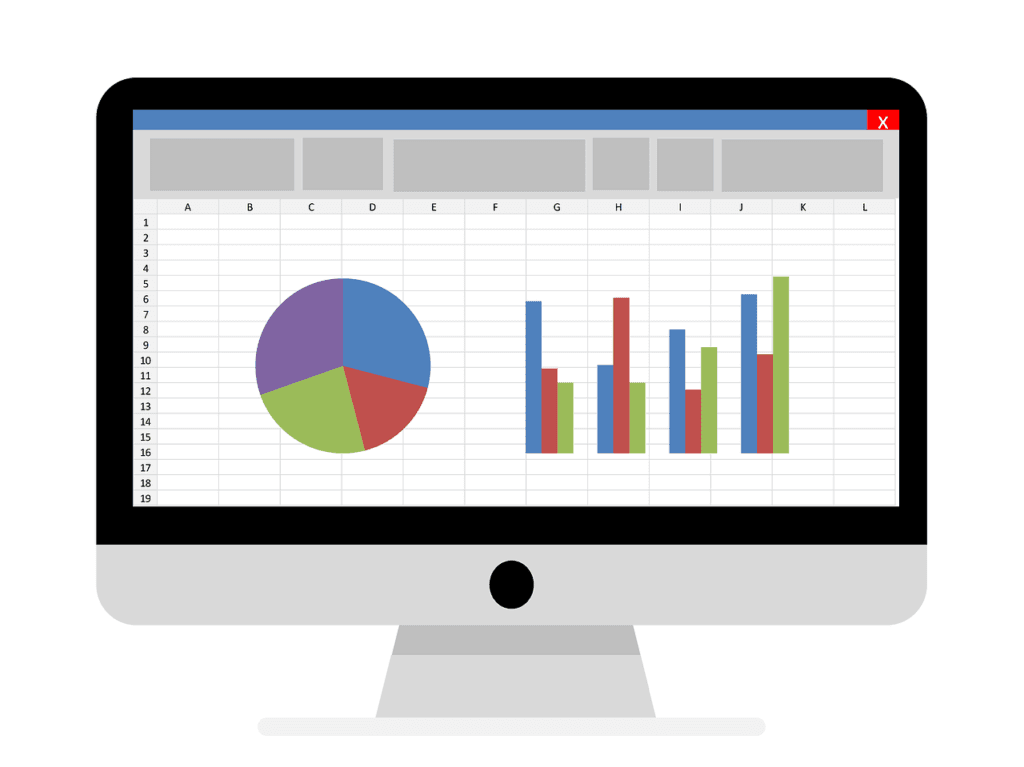Multivariate testing is a powerful website optimization method that allows you to test multiple elements simultaneously to determine the best-performing combinations. By using multivariate testing, you can gain valuable insights into how different elements of your website interact and affect visitor behavior, ultimately improving your conversion rates.
This comprehensive guide will provide an in-depth look at multivariate testing, when and how to use it, tools and resources available, real-life examples, and best practices to help you master this technique and boost your conversion rates.
Understanding Multivariate Testing
Multivariate testing is an advanced optimization technique that involves testing multiple variations of different elements on a webpage or a digital marketing campaign to identify the most effective combination. Instead of testing one element at a time, like in A/B testing, multivariate testing allows you to test the interactions between several elements to find the optimal version of your website.
When to use multivariate testing
Multivariate testing is best suited for situations where you have multiple elements on a page that you believe could impact visitor behavior and conversion rates. It’s especially helpful when you want to understand how different elements interact with each other and how they collectively impact the user experience.
Some scenarios where multivariate testing can be beneficial include:
- Optimizing landing pages with multiple elements, such as headlines, images, buttons, and form fields.
- Testing different layouts, color schemes, and font styles.
- Evaluating the effectiveness of various call-to-action (CTA) combinations.
How multivariate testing works
Multivariate testing works by creating multiple versions of a webpage or digital marketing campaign, each with a different combination of element variations. These variations are then shown to different segments of your website visitors, and their interactions are tracked to determine which combination leads to the highest conversion rates or other desired outcomes.
For example, if you wanted to test two headlines, three images, and two CTA buttons, you would create 12 different versions of the page (2 x 3 x 2), each with a unique combination of these elements. By comparing the performance of each version, you can identify the winning combination and implement it on your website.
Elements to test in multivariate testing
There are virtually no limits to the elements you can test in a multivariate experiment. However, some common elements that are typically tested include:
- Headlines and subheadings
- Images and videos
- CTA buttons and text
- Form fields and labels
- Navigation menus and links
- Layout and design
- Font styles and sizes
- Color schemes
Planning a Multivariate Test
A. Defining your goals and objectives
Before you begin a multivariate test, it’s essential to define your goals and objectives clearly. This will help you determine which elements to test and how to measure the success of your test. Your goals should be specific, measurable, attainable, relevant, and time-bound (SMART).
Some common goals for multivariate testing include:
- Increasing conversion rates (e.g., sales, sign-ups, downloads)
- Reducing bounce rates or cart abandonment rates
- Improving user engagement (e.g., time on site, pages per visit)
- Enhancing the overall user experience
B. Identifying the elements to test
Once you have defined your goals, the next step is to identify the elements on your webpage or digital marketing campaign that you believe have the most significant impact on visitor behavior and conversion rates. To do this, you can:
- Review your website analytics to identify pages with high bounce rates or low conversion rates.
- Use heatmaps and scroll maps to understand how visitors interact with your website.
- Gather feedback from your customers and website visitors through surveys, user testing, or customer interviews.
- Conduct competitor analysis to identify best practices and areas where your website could be improved.
C. Creating a hypothesis
Formulating a hypothesis is a crucial step in the multivariate testing process. Your hypothesis should be based on your goals, the elements you have identified for testing, and any insights you have gathered from your research.
A well-structured hypothesis will help you focus your test and provide a clear direction for your experiment. It should be specific and testable, stating the expected outcome and the reasons behind it.
For example, a hypothesis could be: “By changing the headline, image, and CTA button on our landing page, we expect to see a 15% increase in conversion rates due to improved messaging and visual appeal.”
D. Selecting your audience
In multivariate testing, you’ll need to divide your website visitors into different segments to show them the various combinations of your test elements. This process is known as audience segmentation.
There are several ways to segment your audience, such as:
- Demographics (e.g., age, gender, location)
- Behavior (e.g., new vs. returning visitors, browsing history, past purchases)
- Source of traffic (e.g., organic search, paid ads, social media, referrals)
- Device type (e.g., desktop, mobile, tablet)
By carefully selecting your audience segments, you can ensure that your test results are representative of your target users and provide meaningful insights for optimization.
E. Determining the sample size and duration
The sample size and duration of your multivariate test will depend on several factors, including your website traffic, the number of variations you’re testing, and the desired level of statistical significance.
In general, you’ll need a larger sample size and a longer test duration for multivariate tests than for A/B tests due to the increased number of combinations being tested. To calculate the required sample size and duration, you can use an online calculator or consult with a conversion rate optimization expert.
Running a Multivariate Test
A. Setting up the test
Once you have planned your multivariate test, it’s time to set it up using a multivariate testing tool or platform. These tools typically provide a visual editor that allows you to create different combinations of elements without any coding knowledge.
When setting up your test, be sure to:
- Clearly label each variation for easy tracking and analysis.
- Make sure that all variations are equally distributed among your audience segments.
- Verify that the tracking and reporting features are set up correctly to measure your desired outcomes.
B. Monitoring the test
As your test runs, it’s essential to monitor its progress regularly to ensure that everything is running smoothly and to identify any issues or anomalies. Some key metrics to track during your test include:
- Conversion rates
- Bounce rates
- Time on site
- Pages per visit
By monitoring these metrics, you can quickly identify any issues and make adjustments as needed to ensure the accuracy and reliability of your test results.
C. Analyzing the results
After your test has reached the required sample size and duration, it’s time to analyze the results. Most multivariate testing tools will provide a detailed report showing the performance of each combination and the statistical significance of the differences between them.
When analyzing your results, be sure to:
- Compare the performance of each combination against your original page or campaign.
- Look for any trends or patterns in the data that could indicate the impact of specific elements or combinations.
- Consider the practical implications of implementing the winning combination, such as the potential impact on other aspects of your website or marketing strategy.
D. Implementing the winning combination
Once you have analyzed the results and identified the winning combination, the final step is to implement the changes on your website or digital marketing campaign. This may involve updating your website’s design, content, or layout to incorporate the winning elements, or adjusting your marketing campaign’s messaging and visuals accordingly.
Keep in mind that optimization is an ongoing process, and you should continue to monitor the performance of your updated website or campaign to ensure that the changes have a positive impact on your conversion rates and other key metrics.
Best Practices for Multivariate Testing

A. Start with a clear hypothesis
Having a well-defined hypothesis is essential for a successful multivariate test. Your hypothesis should state the expected outcome and the reasons behind it. This will help you focus your test and provide a clear direction for your experiment.
B. Test multiple elements simultaneously
Multivariate testing allows you to test multiple elements at once, so take advantage of this feature to gain insights into how different elements interact and affect visitor behavior. This can help you identify the best combination of elements for your website or campaign.
C. Use a representative sample
Ensure that your test results are representative of your target audience by using a large enough sample size and segmenting your audience appropriately. This will help you obtain meaningful insights and make informed decisions based on the results.
D. Test for a sufficient duration
Running your test for a long enough duration is crucial to ensure that the results are statistically significant and reliable. Keep in mind that multivariate tests typically require a larger sample size and longer duration than A/B tests due to the increased number of combinations being tested.
E. Don’t be afraid to iterate
Optimization is an ongoing process, and you should be prepared to iterate and refine your website or campaign based on the results of your multivariate tests. Use the insights gained from your tests to inform future tests and continue improving your conversion rates.
Wrapping it up
Multivariate testing is a powerful technique that can help you optimize your website or digital marketing campaign by identifying the best-performing combination of elements. By following the steps outlined in this guide, you can plan, execute, and analyze a successful multivariate test that will provide valuable insights and ultimately boost your conversion rates.
Remember to approach multivariate testing with a clear hypothesis, test multiple elements simultaneously, use a representative sample, test for a sufficient duration, and be prepared to iterate and refine your website or campaign based on the results.
By doing so, you’ll be well on your way to mastering multivariate testing and maximizing the impact of your online presence.
Read Next:
- Usability Testing for CRO: The Definitive Guide
- How to SWOT and PESTLE test your Business Plan
- What’s a Business Model Canvas: (+ Free Template for You!)
- 15 Types of Advertising Propaganda Marketers and Advertisers must know of
- Facebook Ads: A Deep Dive into the basics
- Evergreen Marketing: What it is all about!




















